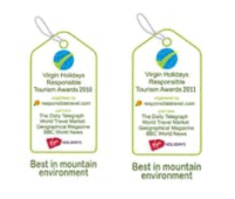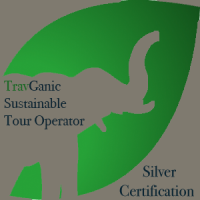7 Challenging Trekking Trails in Nepal
7 Challenging Trekking Trails in Nepal There is something quite intriguing about exploring the unknown. Traversing rugged terrain is very popular, and some of the most challenging environments are found in proximity to mountainous regions. Nepal, the Himalayan nation, has always been a popular destination for trekkers – amateurs and pros alike. While most people may equate Nepal with the expedition to conquer Mount Everest (as seen in the 2006 documentary Everest: Beyond the Limit on Prime Video), the country offers a great variety of treks to other not-so-intimidating-yet-challenging areas. If you’re all prepared to take the next step, then the information below can guide you to some of the best Nepal trekking regions. Due to the difficult terrain, some of these routes are recommended only for experienced trekkers. 1. Manaslu Circuit Trekking (Image: “ManasluCircuit4.jpg” by Spencer Weart licensed under CC BY-SA 3.0.) The Manaslu region is located in west-central Nepal and is one of the less-visited regions of the Himalayas. Basic infrastructure is minimal as you go around Mt. Manaslu, the eighth-highest mountain on earth. Manaslu circuit trekking is possible even though many parts of the area have yet to be explored. Individuals have come here since the early 1990s, thanks to the pristine wilderness. The mountain’s peak crests at 8,156 meters. The trail goes around the Manaslu Conservation Area, which is home to rare animals and birds.
Top reasons to go trekking in Nepal during the off season
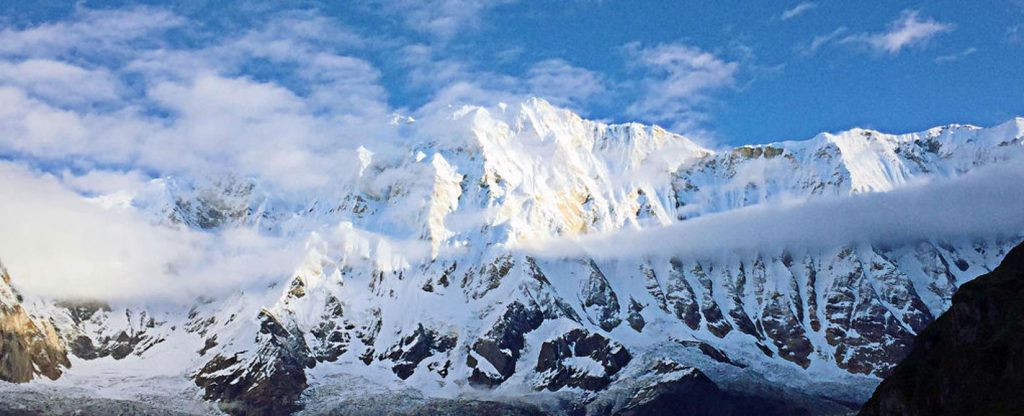
It is widely established that the Nepal Himalaya’s peak times are October–November and March, and April. However, trekking during the less busy season has its advantages. There are two recognized off-peak seasons for trekking in Nepal – the winter and the monsoon. The benefits of going on a trek during the low season. The trails won’t be busy with other trekkers, and you won’t have queues to shower at the lodge. Sometimes you could be the only trekker in the hostel. Trekking during the off-season is my favourite period. Trekking during December, January, and February. The colder winter months mean the clouds rise later to cover the beautiful mountains that Nepal is famous for. Winter is often the clearest time of year due to the colder temperatures. Sometimes the hills stay visible for days on end. Won’t it be cold, and what about snowfall? It can be crisp to cold in the mornings, depending on how high you are. However, you will warm up as soon as you start your day’s hike; you could even be sweating while walking. Have warm layers of clothing in your daypack to layer up when you stop for lunch or at the end of the day. In the evenings, the lodge owners light up the heater in the dining, which should keep you nice and toasty. We receive precipitation a few days every month except during the monsoon, when it rains more frequently. You might get snowfall in the higher altitudes, usually above 3000 meters, but it melts away in a couple of days. You might think to be at the base of the world’s highest mountains; snow could cover the trails and make it risky to trek. Remember that Nepal’s latitude is similar to Cairo and Miami, which is not too far north of the equator, making it much less cold than Europe or North America. You would still have to be careful when you come across frozen streams and might encounter icy parts on the trail early in the mornings or where the sun doesn’t shine much. Believe it or not, Nepal receives more snowfall during spring than winter. Therefore, an added benefit of winter trekking is that you will burn more calories as your body keeps you warm. Trekking in Nepal during May and June It can be pretty hot in the lower elevations of your trek, but it starts being more refreshing and pleasant as you gain altitude. If you are going to a height above 4500 meters, you will see many flowers in bloom, and it is green everywhere. You will also see beautifully colourful moths of all sizes during these months. Another benefit of this trekking during May and June will be burning calories; as it is warmer, you will sweat more, which means detoxification. Trekking will lack other trekkers and no queues to go through narrow trails or cross bridges during the end of the season’s most significant benefit. You will feel like you have the hills entirely to yourselves at times. You will walk through peaceful villages and their farmland, take your time to stop to observe the villagers go about their daily lives, and photograph them. Don’t be surprised if you are the only one at some lodges. The lodge owners won’t be as busy as during the peak season; some like to mingle with you. You could learn about their lifestyle, ask them how tourism has helped them, etc. This could be the beginning of a new friendship. If you are travelling with a small group, you can have leisurely meals, chat, and discuss other trekkers without being self-conscious. Weather Patterns The weather is the most significant concern for those planning to trek during the off-season. The weather in the mountains is unpredictable – more so these days with the effects of global warming. You can be fortunate to see glimpses of the majestic peaks even during May and June. There have been some years when severe weather has affected Lukla or Jomsom’s flights for up to a week during the best times of October and November. I led two treks in July 2017 – one to Helambu and one to Annapurna Base Camp. The Helambu trek was great because we barely saw a total of 10 other trekkers for the entire seven days we were there. We often had lodges to ourselves. The lodge owners were grateful for the income we brought to them during the off-peak season. Unfortunately, we didn’t get to see any snow-clad Peaks. It rained on us for some part of the days – mainly during the afternoons. It rained on us a few days during the monsoon trek to Annapurna Base camp. However, when we were at Machapuchare and Annapurna base camp, the clouds opened up, and we were rewarded with stunning views of the mountains. Unlike in Helambu, we were surprised by how busy the trek to Annapurna Base camp was. As mentioned before, the weather in the mountains is unpredictable. Hundreds of flowers also greeted us, and we enjoyed eating wild herbs and vegetables that only grow during the monsoon season. The scenery was lush green on both these treks. While trekking during the summer months, you will see farmers working their land or crops growing on their farmland and wake up to the song of birds in the morning. Can’t trek during the peak season? Don’t despair if you can take time off to trek during the peak season. You can avoid the crowds and have the trail, hills, and lodges to yourself. Consider visiting Nepal to do a hike during the off-season months of December, January, May, and June or even during the monsoon months of July and August. Mother Nature is always beautiful; we must find positive aspects of what lies in front of us. As the saying goes – “If life gives you lemons – make lemonade.” Happy trekking! Do I get a discount when I go trekking during the offseason? The answer is no. You don’t get discounts when you go trekking during the offseason
Tourism in Ladakh
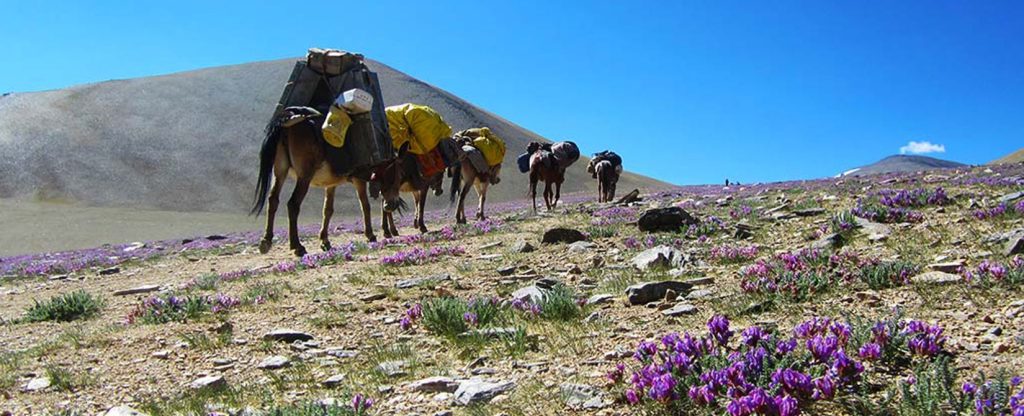
Tourism in Ladakh Ladakh (“land of high passes”) or La Dwags in Ladakhi is a region in the Indian state of Jammu and Kashmir. It extends from the Kunlun mountain range to the central Greater Himalayas to the south. People of Tibeto Burman and Indo-Aryan descent inhabit the region. It is a sparsely populated region of Jammu and Kashmir. Its culture and history are closely related to those of Tibet. Ladakh ruled over a vast expanse during its heyday. In addition to the currently existing areas, Baltistan valleys, mainly in Pakistan now, much of Ngari, including the Guge Kingdom in the east and Aksai Chin in the northeast, used to be part of Ladakh. Contemporary Ladakh borders Tibet to the east, the Lahaul and Spiti region of Himachal Pradesh state in the south, the Vale of Kashmir regions to the west, and the southwest corner of Xinjiang in the far north. Ladakh is renowned for its remote mountain beauty and culture. Ladakh’s strategic location at the crossroads of important trade routes gained importance in the past. Still, since the Chinese authorities closed the borders with Tibet and Central Asia in the 1960s, international trade has dwindled except for tourism. The government of India has successfully encouraged tourism in Ladakh since 1974. In addition, Ladakh is of strategic importance to Jammu and Kashmir, and there is a strong presence of the Indian military. The most substantial town in Ladakh is Leh, followed by Kargil. Nearly half of the Ladakhis are Shia Muslims, followed by Tibetan Buddhists and a small Christian population. Interests include Leh, Suru valley, Zanskar, Padum, Phukthal, and Shayok Valley, among the favourite tourist places. Must-Visit Places The Leh Palace, situated behind the main bazaar, is eight stories high and was designed to look similar to the Potala Palace in Lhasa. Just ahead of the palace is the famous Chamba Temple, a single-roomed shrine with a large icon of Maitreya, the future Buddha. At the top of the street, one can see the Jama Masjid. The Mosque is painted green and white. Another must-visit place is the Sankar Gompa, situated within the city and is one of the oldest structures. Places To Stay There are extensive selections of low-cost, mid-range accommodation offering decent value. However, in recent years, few boutique hotels have sprung up, offering different experiences. A visit to the famous Thikse Monastery is a must. This monastery is the most substantial structure in central Ladakh and is primarily known for Maitreya’s giant statue (future Buddha). Ladakh offers terrific trekking destinations, having some of the most picturesque and challenging treks in the entire Himalayan region. Ladakh is a paradise for adventure lovers due to the mightiest mountain ranges, the Greater Himalaya and the Karakoram, the Ladakh range, and the Zanskar range. Trekking in Ladakh presents you with picturesque mountains and breathtaking landscapes. Popular treks The treks from Jingchen to the Markha Valley The Rumtse to Tsomoriri trek The Zanskar Trek The Lamayuru to Alchi trek The Sham trek also is known as Likir to Temisgam trek. Best Time to Trek Treks are possible from the end of June until mid-October. Some of the passes along the treks are higher than 5,000 meters in altitude. Many trekking agencies in Leh offer trekking packages with a guide, packhorses, food, and supplies. Good roads to all significant places in India connect Leh. Leh is 1047 km from Delhi, 434 km from Srinagar, 230 km from Kargil, and 494 km from Manali. The overland approach to Ladakh from Kashmir Valley via Kargil is approximately 434 km; it remains open for traffic from early June to November. The exciting part of this road journey is the ascent up the 11,500 feet 3,505 m high Zoji-La, which serves as the gateway to Ladakh. There is also a road between Manali and Leh, which is 473 km long. Manali to Leh Road has served as the second overland approach to Ladakh. Open for traffic from mid-June to early October, this high road traverses the upland desert plateau of Rupshu, where the altitude ranges from 3,660m to 4,570m. A total of 5 high passes fall en route, among which the highest is Taglang-La, which our Indian friends claim as the world’s second-highest pass at an altitude of 17,469 feet/5,235 m, and the Khardungla is the highest road in the world. For facts claiming otherwise, click here. The Himachal Pradesh Tourism (HRTC) and J&K State Tourism (SRTC) operate daily Deluxe and Ordinary bus services between Manali-Leh and Srinagar-Leh. The bus journey between Leh and Manali takes about 19 hours or two days, with an overnight halt in Sarchu or Pang camps. And the Srinagar-Leh trip takes 17 hours. Air also connects Leh from Delhi, Srinagar, and Jammu. We wish you a wonderful holiday in this highland. If you need any assistance in putting together a memorable trip, please get in touch with us. Check out our Trekking packages for Nepal, Bhutan, India, and Tibet.
Ladakh Is One Of The Few Regions For A Summer Himalayan Trek in India
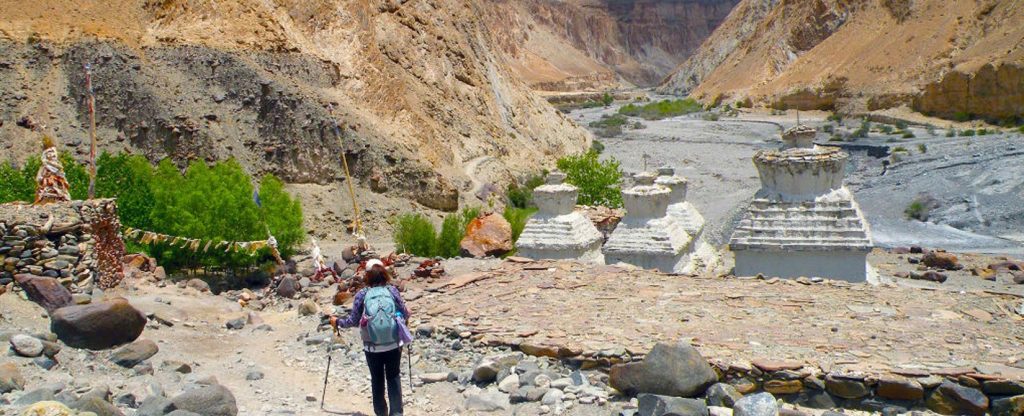
Ladakh Is One Of The Few Regions For A Summer Himalayan Trek in India Leh, the capital of Ladakh in Northern India, is only an hour’s flight away from Delhi. However, for the more adventurous and those who don’t suffer from motion sickness, you can opt for a bone-jarring 22-hour plus bus ride. The stunning scenery on this drive has to be done once in life! Ladakh means land of high mountain passes. The Buddhist monasteries, spectacular pastel-coloured deserts, jagged peaks, and colourful prayer flags flapping in the wind are Ladakh’s characteristics. Although stark, Ladakh’s landscape is magically colourful. The summer is green in the valleys, with snowmelt streams feeding the green pastures and crop fields. Brilliant colours of the prayer flags flutter on the roofs of traditional whitewashed houses. The bright sun shines intensely throughout the year in Ladakh, making it sensible to use solar Para boilers to boil water or cook. It shares its borders with China and Pakistan. India has had wars with both, which makes Ladakh a militarily strategic area. It was opened for overland travel in 1974 when the tensions lessened with China. The local population and military presence stand about in equal numbers – 250,000 each. Once a Kingdom and an essential part of the Silk Route, Ladakh is now part of Jammu and Kashmir. The Ladakhis are an exciting mixture of Tibetan, Central Asian, and Indo-Aryan. It became part of Independent India in 1948. Ladakh is one of the few areas in the Himalayas that sits in the rain shadow where the mighty mountains block the Indian sub-continent’s monsoon clouds from passing through. Ladakh is fast becoming a playground for the fans of the Himalayan Adventure holidays during the summer season. They do get “freak rainfalls” every few years. In 2010, she witnessed a catastrophic flash flood in which nearly 200 people were killed in Leh. You can walk on ancient paths through Buddhist villages with Tibetan architecture, which brings you back in time. On the way to Leh Palace, you will encounter numerous Tibetan refugees selling prayer flags, turquoise, and coral jewellery alongside the Kashmiri merchants who offer pashminas and beautiful silk carpets. The Leh Palace was a crumbling ruin until it was refurbished recently. With its sloping, buttressed walls and overhanging wooden balconies, the re-renovated Palaces stand majestically over Leh’s city. Carved lion heads guard the palace entrance, and the throne room is painted with tigers and Buddhist murals, maintaining its ancient grandeur. Smiling locals will greet you with “Jullay” while strolling in the market/bazaar area. “Jullay” is Ladakh’s traditional greeting, which is used at all times of the day. It can mean – “Hello,” “Thank you,” and “Goodbye.” Most visitors to Leh visit Hemis Monastery, which is an hour’s drive south of Leh. Hemis is one of Ladakh’s most important monasteries, and on the ride back to Leh, most tourists stop to visit the Thiksey monastery. The Thiksey monastery sits on top of a hill with its whitewashed temples with magnificent paintings. One can walk from temple to temple with the scent of burning incense and butter lamps, and if you are there early in the morning or the evening, you might even hear the monks chanting. The main attraction of the Thiksey monastery is the two-story-high Maitreya Buddha statue. Another popular acclimatization tour is the walkthrough fields lined with poplars and willow trees to the fortress and monastery at Shey, once the king’s summer palace. The popularity of Ladakh’s natural beauty has increased the number of visitors from the West as a choice for summer trekking vacations. As a result, there is a growing number of hotels and guest houses in Leh. Ladakh’s popularity has grown tremendously with domestic tourists after a movie with Ladakh scenery became a super hit. Previously the tourist season used to be in July and August. However, India’s new economic boom has become an all-year destination. Some treks we offer in Ladakh The treks from Jingchen to the Markha Valley The Rumtse to Tsomoriri trek The Zanskar Trek The Lamayuru to Alchi trek The Sham trek also is known as Likir to Temisgam trek. Check out our Trekking packages for Nepal, Bhutan, India, and Tibet.
Trekking in Nepal in the summer season

Trekking in Nepal during the summer season Nepal has a short pre-monsoon summer during May and June. The monsoon begins in the second or third week of June. You can expect the temperature to be hot in the lower elevations and warm at higher altitudes during the daytime. In addition, there might be some snowfall in the higher mountains than during the summer, as it is much warmer, and the snow melts quicker, making the trails wet, muddy, and slippery. Therefore, be cautious and trek safely. When you come across wet stones/rocks, green or black rocks/trail, muddy trail, or roots of trees in the forest – assume it is slippery and trek carefully. You will make most of your favourite trekking trails if you are an experienced hiker except for the less trodden treks such as Upper Dolpo Circuit or Upper Dolpo Traverse because deep snow will make it challenging to get through the passes that are above 5000 meters. As usual – it pays to invest in proper equipment such as a suitable sleeping bag, a couple of layers of fleece, the right thermal underwear, thick hiking socks, gloves, trekking pants, and warm hats, to name a few essential gears to invest in. It is always better to have more than less. It is good to dress up in layers that you can ‘peel’ one at a time when you start to warm/heat up as you begin trekking. Benefits of Trekking in Nepal Himalayas during the summer. May/June is summer, and flowers bloom in Nepal’s middle and high hills. Rhododendron forests can be very colourful with white, pink, and crimson red (Nepal’s national flower) flowers in bloom, Magnolias and wild orchids, to name a few. However, the clouds begin to form in the latter part of the day, and it can start raining at the lower altitude and snow in the higher elevations during the late afternoon or evening. This is a good thing as it can clear the clouds and clear the clouds for excellent mountain views the following day. The rain, hail, or snow can drop the Rhododendron petals in the higher altitude areas and make the forest floors bright and colourful. Most of the lodges and restaurants will be open during the summer season. Your food should be served faster due to the low number of trekkers. The queue for the shower should be short, if at all. You will be warm to hot while hiking in the sunny weather – perhaps you will sweat on the uphill climbs. You will get to meet some other trekkers in the lodges. The Internet speed should be decent due to fewer people logging in. Can I do a high-altitude trek in Nepal during May and June? You can undoubtedly do a high-altitude trek in Nepal during May. It is better to do a high-altitude hike than during February or March. We do receive some precipitation for a few days every month. We receive more massive snowfalls during February and March rather than in the middle of May and June. Dangers/Inconveniences of trekking in Nepal during the May and June Summer months. All food on the menu might not be available. The toilet floors could be wet and dirty due to damp and muddy trails. The paths could be muddy due to the summer rain/snowfall. But on the other hand, the trail could be slippery, and dirt can camouflage slippery tree roots. There could be very windy conditions in the higher elevations. You will likely face rain in the lower elevations and snow in the higher mountains during summer, especially if the monsoon arrives in early June. The views might not be as good in spring as it is during late autumn and May. In addition, forest fires could worsen the views during late spring. Trekking regions that fall into the Rainshadow areas: Upper Mustang Trek You will be visiting one of the scenic trekking trails in the monsoon season in Nepal. Once an independent Kingdom that was later annexed into Nepal’s territory, Upper Mustang is one of the restricted trekking destinations in Nepal that requires a special permit and to be booked with a tour operator. Back Packers are not allowed to trek here. The Buddhists who once followed the Bon religion inhabit the upper Mustang predominantly. Upper Mustang is a high-altitude desert. During the monsoon season, you will witness the rivers’ increased water levels, including the holy and mighty Kali Gandaki River. Upper Dolpo Trek Juphal to Juphal or Upper Dolpo Traverse Juphal to Jomsom Trek This trekking destination takes you to one of the most remote regions in Nepal. The followers of the Bon religion, followed by Buddhists and Hindus, mainly inhabit it. The locals’ terrain, culture, and traditions are very close to the Tibetan way of life. The trekking trail partly lies in the Shey Phoksundo National Park, Nepal’s most extensive National Park. It is the only National Park in the trans-Himalaya region. The beauty of this region is unparalleled to other trekking destinations. Upper Dolpo doesn’t receive continuous rainfall in the rain shadow region. Trek here for the unique culture, landscape, scenery, and biodiversity. Jomsom to Muktinath Trek – email us for the itinerary. This trekking destination is more popular as a pilgrimage that is suitable during the monsoon season in Nepal. Muktinath attracts both Hindus and Buddhists alike for pilgrimage. Thus, you may embark on a spiritual or adventurous trek to this area, which remains dry most of the year, except in the winter when the region is covered by snow. Besides the holy Muktinath Temple, Kagbeni is the other popularly travelled destination in this region. Trekking during the summer of 2020 was disrupted due to the COVID-19 pandemic. Check out our Trekking packages for Nepal, Bhutan, India, and Tibet.


